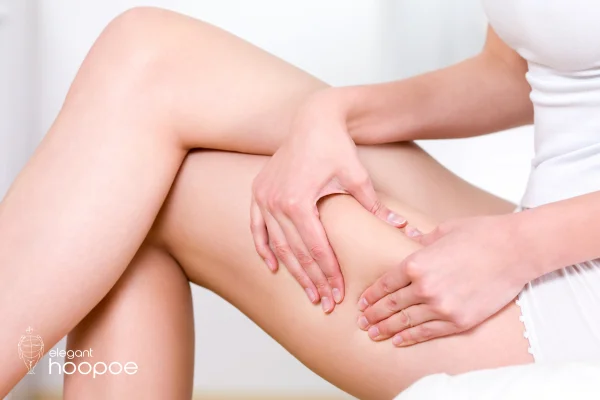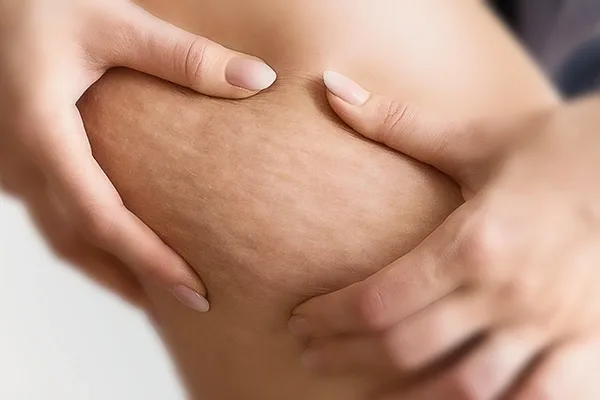How to Reduce Cellulite on Thighs Naturally and Effectively?
Wondering how to reduce cellulite on thighs? While complete elimination isn’t guaranteed, several methods can noticeably minimize its appearance:
Healthy Diet & Hydration – Cut sugar, eat more protein, healthy fats, and fiber, and drink plenty of water.
Targeted Exercise – Focus on squats, lunges, step-ups, and stair climbing to tone thighs and boost circulation.
Massage & Dry Brushing – Stimulate blood flow and lymphatic drainage with foam rolling or dry brushing.
Collagen & Creams – Use collagen supplements and cellulite creams to improve skin elasticity.
Advanced Treatments – Try non-invasive therapies like CoolSculpt, Trusculpt, or the Iyashi Dome for faster results.
Consistency in lifestyle changes is key to reducing cellulite on thighs and maintaining smoother, firmer skin.
One of beauty’s ever-present banes is cellulite. So much so that it is estimated that up to 90% of all adult women have it somewhere on their bodies. In this article, we explain the formation of cellulite and its causes and provide recommendations to prevent and reduce cellulite.
What is cellulite?
In the human body, fat cells are typically arranged in a cross pattern structure for men and a vertical column structure for women. As weight gain occurs or internal fat deposits increase, the fatty tissues can over-aggregate to put pressure on the structures just beneath the skin. But while the fat deposits in males are less concentrated, with the cross pattern structure efficiently distributing this pressure, the fat deposits in females are concentrated in the lower areas and the vertical structure naturally pulls back against this pressure to create exterior depressions – referred to as cellulite.
Cellulite is an uneven skin impression, caused when subcutaneous fat pushes against the skin’s columns to create visible bumps on the outside.
It disproportionately affects women and may be present in the arms, chest, and abdominal region, but is usually worse in the bums and thigh where fatty tissues are more prevalent.
Related article: Emtone cellulite treatment
Grades of cellulite
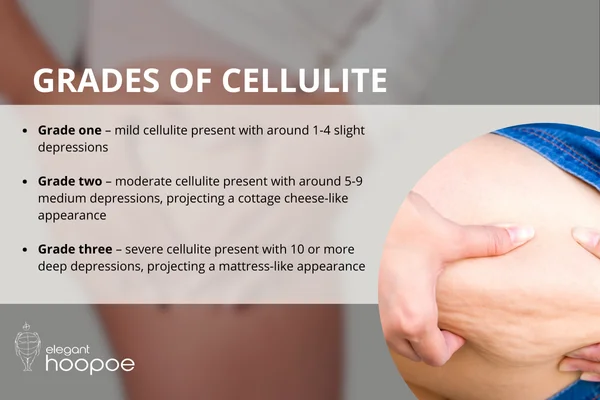
There are three grades of cellulite:
- Grade one – mild cellulite present with around 1-4 slight depressions
- Grade two – moderate cellulite present with around 5-9 medium depressions, projecting a cottage cheese-like appearance
- Grade three – severe cellulite present with 10 or more deep depressions, projecting a mattress-like appearance
What causes cellulite?
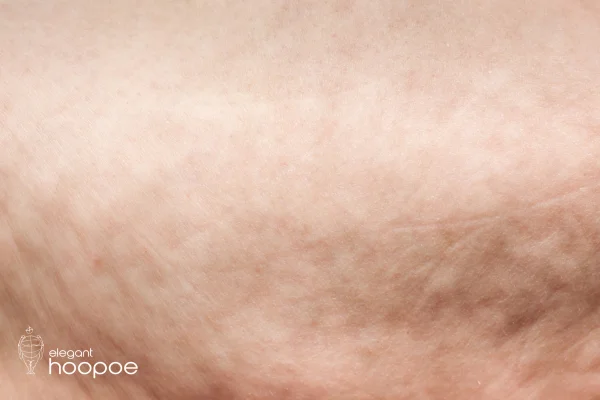
Age and genetics
The skin has natural proteins, chief amongst them collagen and elastin, that supply its elasticity, strength, and firmness of structure. However, these proteins stiffen up with age and can be degraded by the buildup of adverse environmental exposure.
Degradation of these proteins (or their functions) increases the likelihood of dimples as the skin’s connective tissue may become too thin or replete with holes, from where fat can poke through. Genetics also causes cellulite by determining the pattern in which fat is arranged (some women have the cross-pattern structure that is more commonly found in men and are significantly less prone to cellulite).
Rapid weight gain/loss
Weight gain increases the amount of fat available for storage in a particular area and the subsequent pressure on the skin columns. This explains why pregnant women appear more susceptible to cellulite formation, as they go through significant weight changes within a short period.
Ironically, losing weight fast can also result in cellulite by causing skin sagging and a ‘deflating effect’, where there is not enough skin for the connective tissues to hold onto. If you want to reduce cellulite, make sure to stick to a diet and exercise routine for healthy weight reduction.
See also: How Autumn Stress Affects Your Weight
Unhealthy eating habits
As weight gain causes the formation of cellulite, it bears to reason that factors that instigate weight gain will also cause cellulite. Chief among these factors are sugary foods and processed foods. Besides causing skin inflammation, sugar also contrives to weaken collagen fibers and may also lead to rapid insulin spikes, which promote fat storage if the sugar is not immediately used up. So, a poor diet can make it really hard to reduce cellulite.
Sedentary lifestyle
We need muscles to tone the body’s fat-prone areas, and in the absence of exercise or muscle-strengthening activities (especially those that target the bum and thighs), these areas will have an outsized fat-to-muscle ratio, and cellulite becomes more likely.
A sedentary lifestyle may also contribute – along with an unhealthy diet – to the bloating of the lymphatic nodes, the body’s primary drainage system for the removal of toxins. The consequence is a build-up of fluid, which can combine with fatty deposits to further pressurize the skin columns and cause cellulite.
Hormonal imbalances
Hormones play a major role in the formation of cellulite, with elevated levels of estrogen, insulin, thyroid, prolactin, adrenaline, and progesterone contributing to rapid weight gain/weight loss, which we’ve covered as the key causative factor for cellulite.
Other factors like stress, sicknesses, and certain medications can also lead to the formation of cellulite.
How can you prevent and reduce cellulite?
It’s nearly impossible to completely get rid of cellulite, but its appearance can be minimized through a healthy diet and hydration, targeted exercises, massages, laser therapy, and cellulite-reducing creams/ collagen supplements.
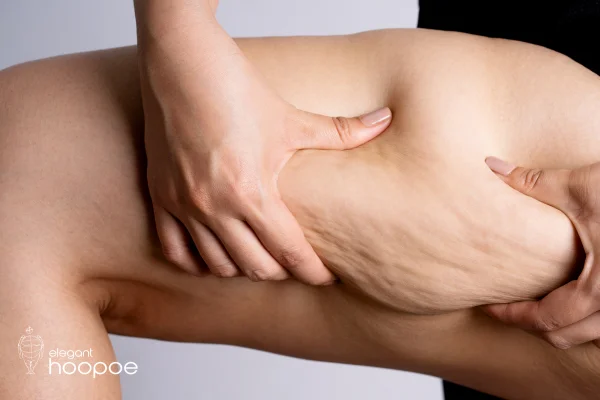
Diet and hydration
Replacing your consumption of sugary and inflammatory foods with high-protein, healthy fats, and fiber foods is a sure-fire method to reduce cellulite by decreasing adipose deposits and enhancing metabolic flexibility. Sugar and carbs, as we already alluded to, have their unused deposits stored as fat.
Proteins, on the other hand, satiate quickly (helping you to eat less) and also build lean muscle mass, which is more metabolically active than fat muscle mass. And healthy fats, besides also promoting satiety, help to stabilize blood sugars and prevent insulin spikes.
Drinking lots of water is also important for cellulite reduction. Water enhances blood circulation and also aids detoxification – helping to eliminate waste and toxins that will otherwise build up to reduce the smoothness of the skin.
Related article: Low GI diet for weight loss
Massages and laser therapy
It’s widely acknowledged that cellulite occurs more in areas with poor blood circulation, like the bum and thighs. While getting massages may be overly invasive in these areas, self-administered massage options exist that can be performed from the comfort of your home. Dry brushing and foam rolling are two of these options that can be used to stimulate blood flow and reduce tightness in the muscles and connective tissues.
This will aid lymphatic drainage, leading to faster elimination of toxic liquid and better all-around circulation in these areas. Laser therapy and professional massages are other options that can be used to promote blood flow and smooth the skin to reduce the cellulite.
Exercises
Targeted hips, butts, and thigh exercises promote blood circulation (and, by extension, nutrient circulation, i.e., collagen) in these areas and can also double as a mechanical way to create cellulite-free lean muscle mass. Moreover, you will also sweat during these exercises, helping to eliminate the fluids and toxins that build up on the skin.
Some exercises that target fat deposits in the lower regions to reduce cellulite include:
- Lunges
- Squats
- Step-ups
- Mountain climbing etc.
Treadmills and uphill and stair climber machines are also very helpful for targeted exercises in these regions.
Cellulite reduction creams and collagen supplements
The market is flooded with multiple cellulite reduction creams and bioactive collagen supplements that have been formulated to strengthen the skin’s integrity from the outside and inside, respectively.
Please consult your dermatologist or certified health care adviser for specific recommendations to reduce cellulite using skin products.
Non-invasive options to reduce cellulite faster
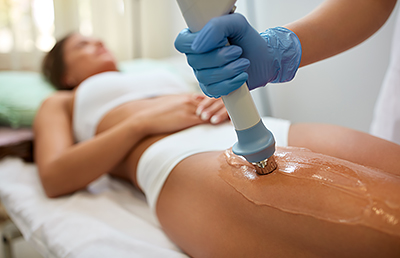
Modern advances in biological science and engineering have created newer options for removing cellulite that provide more guaranteed results than anything we’ve covered in this post.
These cellulite reduction methods include:
Coolsculpt therapy: the use of very low temperatures to ‘kill’ fats and facilitate their evacuation via the body’s lymphatic system
Trusculpt and truflex solutions: two cutting-edge machines used to mimic thousands of exercises in a 15-minute session and quickly tone muscles to reduce cellulite
The Iyashi Dome: Yet another hyper-modern solution (only 600 are available in the entire world!) that is designed to resemble the conditions of ancient Japanese saunas. It tones muscles and rapidly eliminates toxins, resulting in less cellulite.


